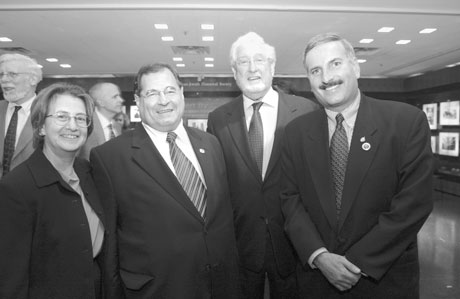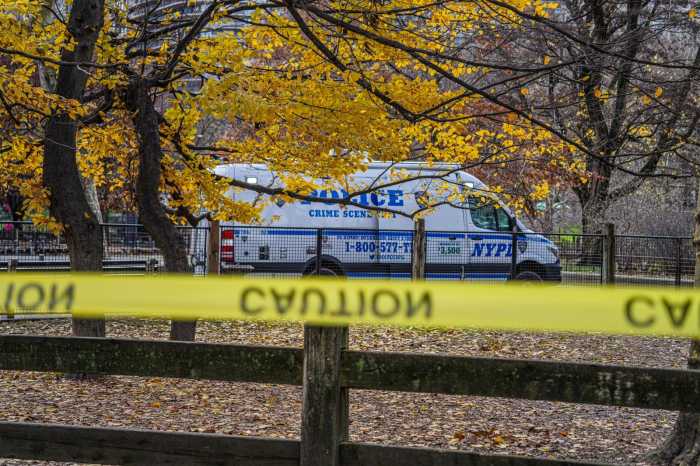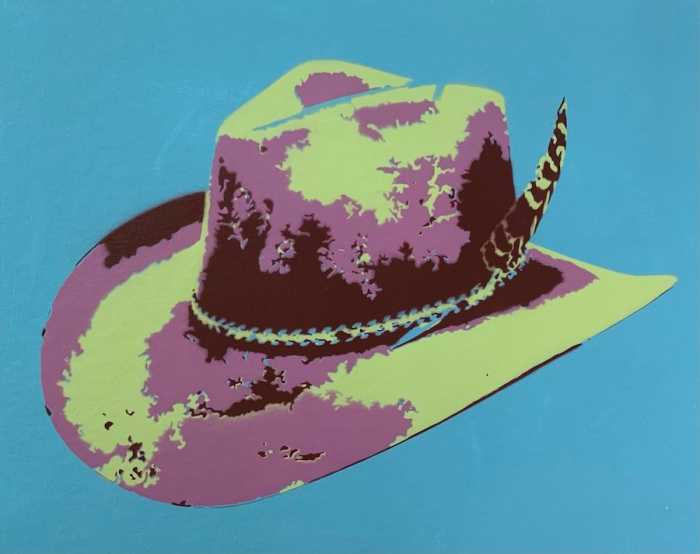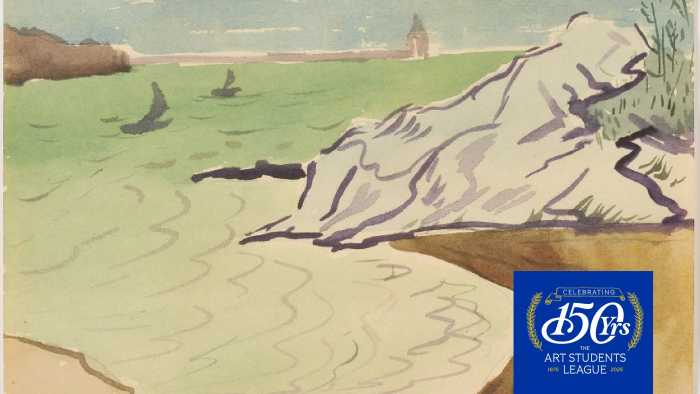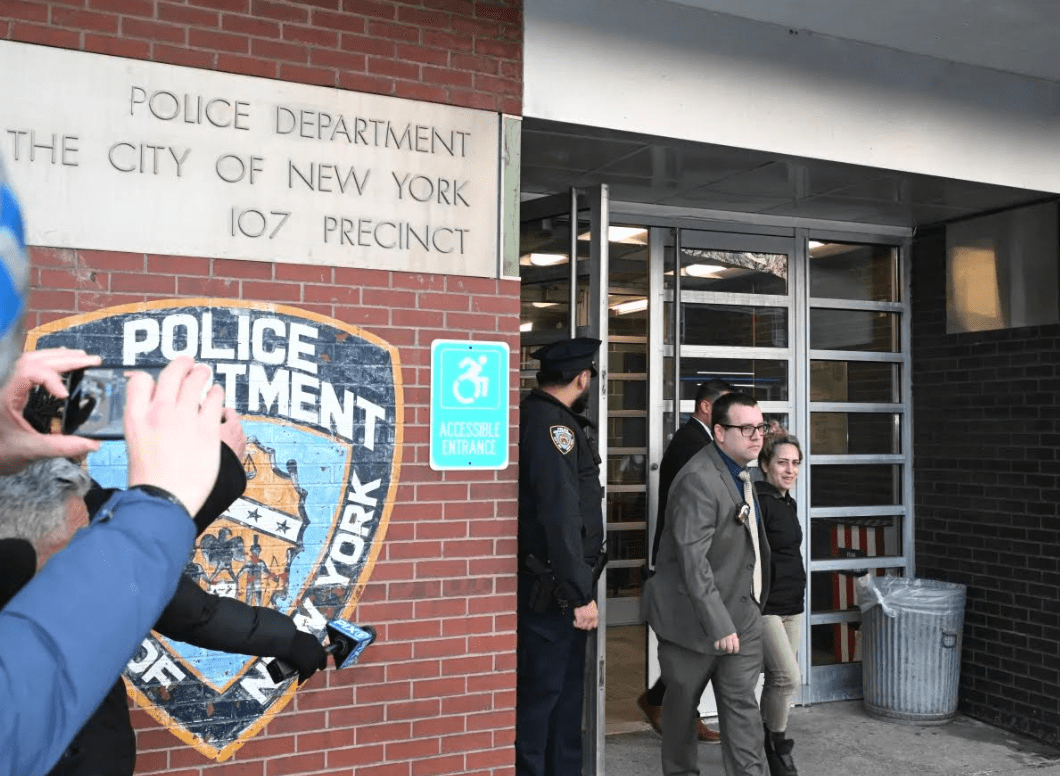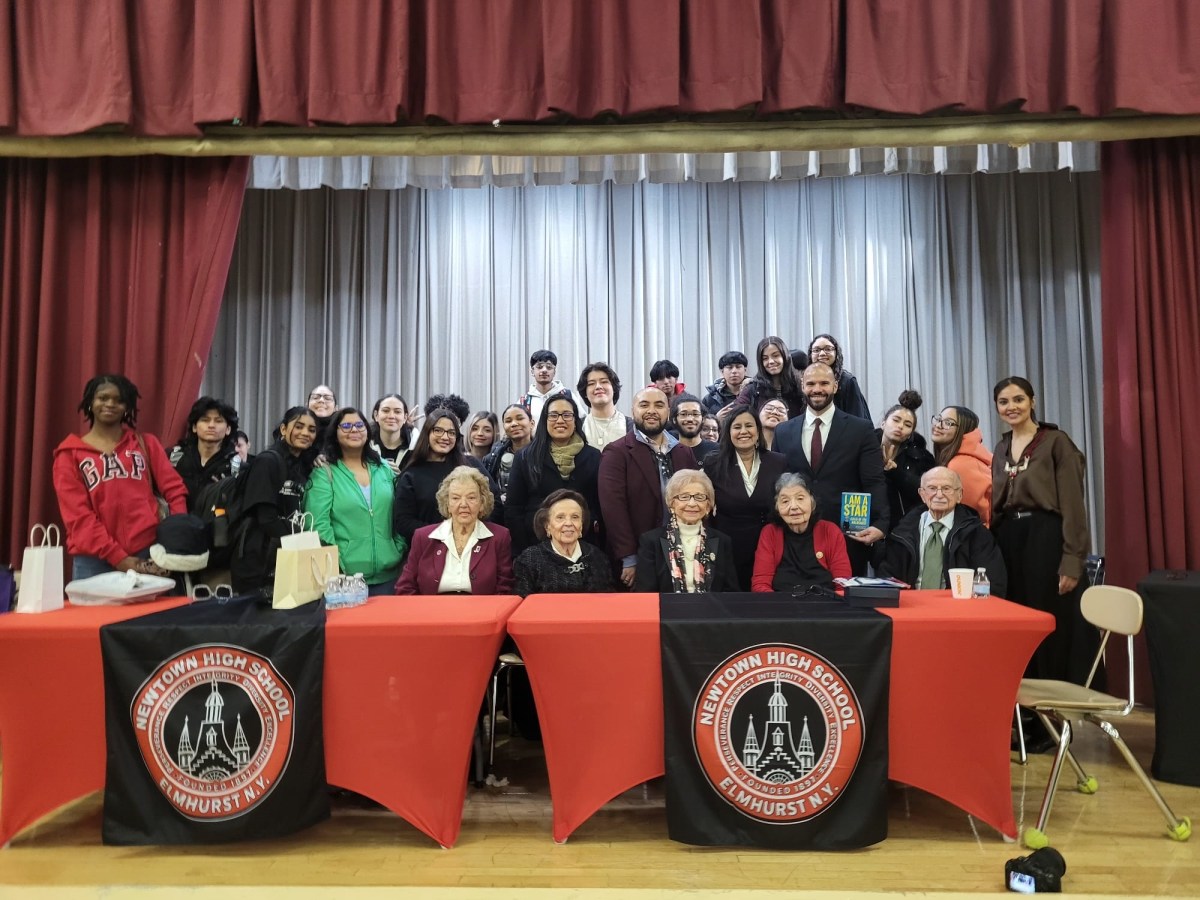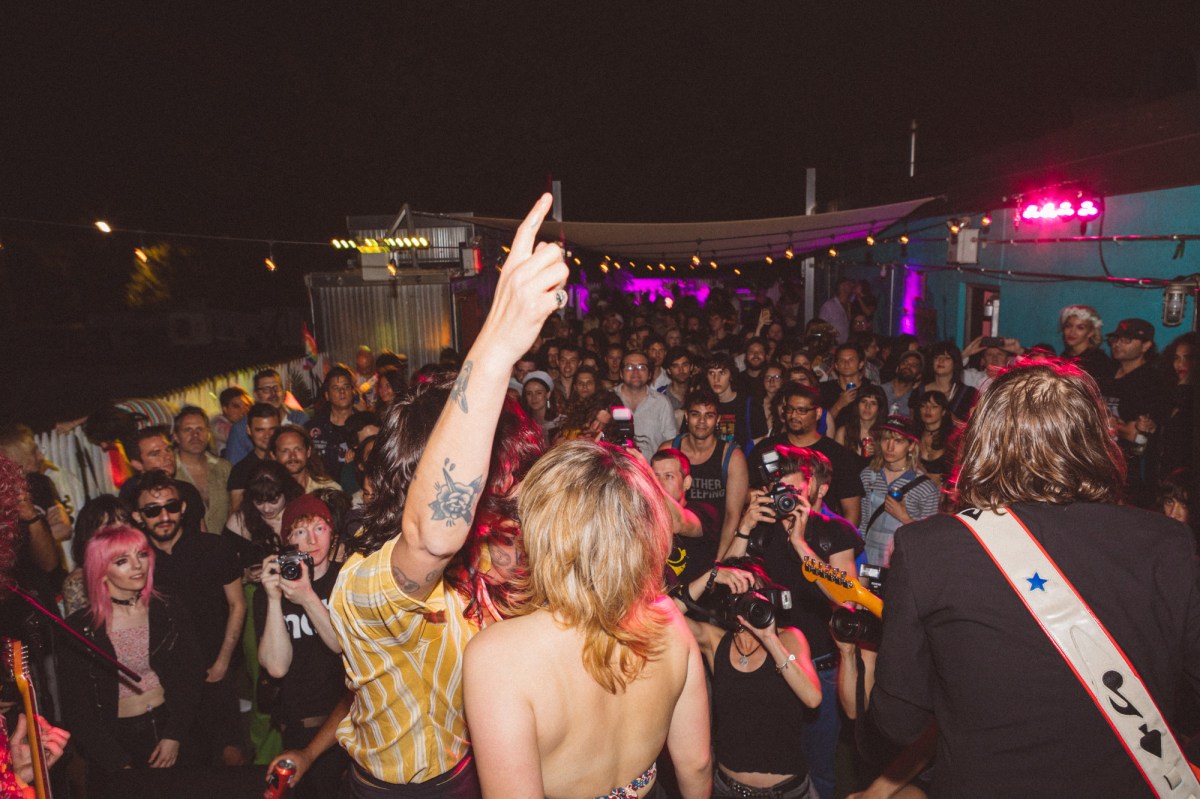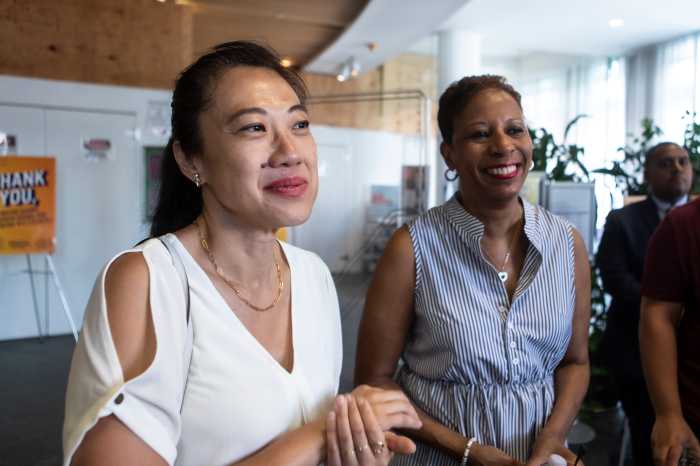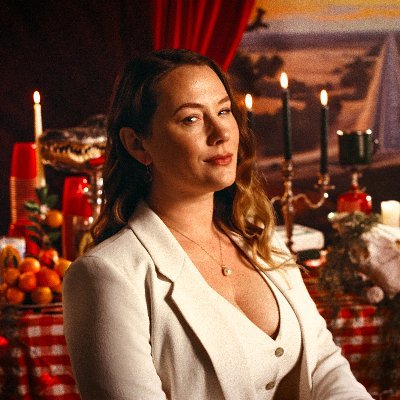By Jessica Mintz
New Yorkers know this well: You always need more storage.
So commented Don Lasker, a member of the architectural firm that designed the Center for Jewish History in Chelsea. On Monday evening, Lasker and many others — including city, state and federal politicians — gathered to celebrate the six-story vertical expansion that, when completed next spring, will provide 12,000 new sq. ft. of storage space for the center’s considerable archives.
“The steel is in,” and concrete might be poured as early as next week, boasted a visibly proud Bruce Slovin, chairperson of the center, in an interview before the ceremony. “We are the largest repository of Jewish cultural history outside of Israel,” he said.
Today, much of the center’s collection is stored in a warehouse, and is “not as accessible as we would wish,” said Slovin. Moving those items on site — some of the 100 million archival documents, 500,000 library volumes and countless photographs, posters and artworks — has been a driving force behind the expansion.
The $4 million project is on track to wrap up by the beginning of April 2004, and while only $3.2 million has been raised, Slovin is optimistic that the rest will come through.
Much of the existing money has come from the City Council and Borough President C. Virginia Fields’ office, and Monday’s formal groundbreaking, or “roof raising,” as the center called it, was held in their honor.
Councilmembers Eva Moskowitz and David Weprin both spoke at the event. Weprin, chairperson of the council’s Finance Committee, stated that the city gave $2.5 million to the project. Once debate began, he said, it wasn’t difficult to convince the Council that it would be money well spent.
“It told a good story,” said Weprin. “It covered a lot of different areas — education, history, presence in the community. … It was an easy sell.”
Borough President Fields also spoke at the ceremony, which was held just days after Rosh Hashanah, the Jewish New Year. She was greeted by loud applause for her opening line, “L’shana tovah,” or “Happy New Year” in Hebrew. “I am impressed by the scope and depth of the collections,” said Fields. “I am delighted to have been able to allocate money to improve these historical archives.” Her office contributed $400,000 to the project.
The director of the center, Joshua Plaut, called the $3.2 million already raised “a vote of success” in a tough economy.



